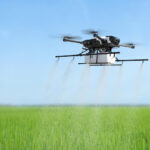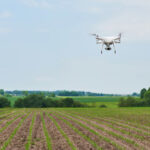As South Africa’s urban areas continue to expand, the demand for fresh, locally grown food is rising. Urban farming, the practice of growing food in cities and densely populated areas, offers a sustainable solution to this demand. By making the most of small spaces, urban farmers can not only produce their own food but also create income-generating opportunities. This article provides key insights for South African farmers interested in urban farming, covering innovative techniques, space-saving methods, crop selection, and challenges to expect.
1. The Growing Need for Urban Farming
With increasing urbanization and food insecurity, particularly in townships and low-income areas, urban farming plays a critical role in ensuring access to fresh, nutritious food. Urban farming can transform unused spaces—such as backyards, rooftops, balconies, and even walls—into productive farming areas. This contributes to food sovereignty, improves nutrition, and reduces the environmental impact of transporting food over long distances.
2. Maximizing Space: Techniques for Small-Space Farming
To make the most of small urban spaces, urban farmers can adopt several innovative techniques. These techniques not only maximize space but also ensure high productivity in areas where land is limited.
Vertical Farming
Vertical farming involves growing plants in vertically stacked layers, allowing farmers to grow more in less space. This method is particularly useful in urban areas with limited ground space, such as rooftops or small backyards. In vertical farms, plants are typically grown in towers or racks, often using hydroponic or aeroponic systems, which reduce the need for soil and water.
Container Gardening
For those with limited space, container gardening offers a simple solution. Containers can be placed on balconies, patios, or even windowsills. Almost any container—such as pots, buckets, or recycled materials—can be used, provided it has good drainage and enough space for root growth. Crops like spinach, lettuce, herbs, and tomatoes do particularly well in containers.
Hydroponics and Aquaponics
Hydroponics is a soil-free method of growing plants using nutrient-rich water, making it perfect for urban environments. It requires less space and water compared to traditional soil farming, and crops grow faster due to direct access to nutrients. Aquaponics combines hydroponics with fish farming, where the waste from the fish provides nutrients for the plants, creating a closed-loop system. Both techniques can be set up in small spaces and are scalable, making them suitable for urban environments.
Rooftop Gardens
Rooftop farming is gaining popularity in urban centers. By utilizing otherwise unused roof space, urban farmers can grow vegetables, herbs, and even fruit trees. Rooftop gardens not only produce food but also reduce the heat island effect in cities, improve air quality, and enhance urban biodiversity.
Raised Beds
For those with access to small plots of land, raised beds offer an efficient way to grow a variety of crops in confined spaces. Raised beds are easier to maintain and can be filled with high-quality soil to ensure better yields. These beds can also be placed on paved surfaces, making them ideal for backyards or communal spaces.
3. Best Crops for Urban Farming in South Africa
The success of urban farming depends largely on choosing the right crops for small spaces. In urban settings, farmers should focus on high-yield, fast-growing crops that are well-suited to local climates and can be grown in containers or vertical systems.
Leafy Greens
Spinach, lettuce, and kale are excellent choices for urban farming. They grow quickly, require minimal space, and can be harvested multiple times throughout the growing season.
Herbs
Herbs such as basil, parsley, coriander, and mint are perfect for container gardening. They grow well in small spaces, are highly marketable, and have high yields per square meter.
Tomatoes and Peppers
Tomatoes and peppers thrive in containers or raised beds. With proper staking or vertical support, these plants can produce abundant yields in small spaces.
Root Vegetables
Crops like carrots, radishes, and beets can be grown in deep containers or raised beds. They grow quickly and are easy to cultivate, making them ideal for urban farming.
Microgreens
Microgreens, young seedlings of vegetables and herbs, are highly nutritious and can be harvested within a few weeks. They require very little space and are in high demand in urban markets and restaurants.
4. Challenges and Solutions in Urban Farming
Limited Space
The primary challenge in urban farming is the limited space available. To overcome this, farmers can use vertical farming, container gardening, and rooftop spaces, as mentioned above. Maximizing the available growing area is crucial for profitability in small spaces.
Access to Water
Water access can be a challenge, particularly in drought-prone areas. Implementing water-efficient systems such as drip irrigation or using greywater recycling can help reduce water consumption. In hydroponic and aquaponic systems, water is recirculated, significantly reducing water usage.
Soil Contamination
Urban soil may be contaminated with heavy metals or pollutants, which can affect crop health. Raised beds, containers, or hydroponic systems offer alternatives to growing in contaminated soil. Regular soil testing and remediation are also recommended.
Pests and Diseases
Pests and diseases can spread rapidly in dense urban environments. Organic pest control methods, such as companion planting, using natural predators, and introducing beneficial insects, can help reduce the need for chemical pesticides. In small spaces, manual pest control methods, like handpicking insects or using row covers, are also effective.
High Start-Up Costs
Setting up a vertical farm or hydroponic system can involve significant initial investment. However, the long-term savings in water, fertilizer, and space can offset these costs. Additionally, urban farmers can start small and scale up as their profits grow.
5. The Role of Urban Farming in Sustainability
Urban farming offers several environmental benefits. By producing food locally, urban farms reduce the carbon footprint associated with transporting food from rural areas. They also promote biodiversity in cities, improve air quality, and reduce stormwater runoff. Additionally, urban farming contributes to food security by making fresh, nutritious food accessible to city dwellers.
6. Support and Resources for South African Urban Farmers
South African urban farmers can access several resources to help them start and expand their urban farming operations. Municipalities in cities like Johannesburg and Cape Town offer grants and support for urban agriculture initiatives. Organizations like Food & Trees for Africa and Abalimi Bezekhaya also provide training and resources for aspiring urban farmers. Partnering with local markets, restaurants, or urban co-operatives can also help urban farmers find customers for their produce.
Urban farming presents an exciting opportunity for South African farmers to grow food in cities, maximize small spaces, and contribute to food security. By adopting innovative farming techniques such as vertical farming, hydroponics, and container gardening, urban farmers can overcome space constraints and grow a wide variety of crops. Although challenges such as limited water and start-up costs exist, the benefits of urban farming far outweigh the difficulties. With the right knowledge and resources, urban farming can be both profitable and sustainable for South African farmers.







